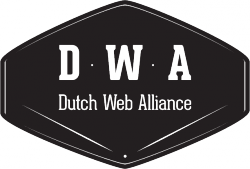Recently, I presented a session on safety science and incident management at a local meetup. I tend to close such sessions with a number of literature tips (books and websites). A small number, to not overwhelm the audience! However, in the post-talk discussion, after being prompted by attendees, I shared (many) more literature tips .
This triggered me to write a short post containing a number of books and websites that have inspired me the past few years. Not just in the field of safety science and incident management, but also a few about leadership and teams.
So without further ado, here’s some “light” reading for you to enjoy!
Safety science and incident management
- Sidney Dekker – The Field Guide to Understanding ‘Human Error’
- Sidney Dekker – Just Culture
- Sidney Dekker – Drift Into Failure
- Sidney Dekker – Foundations of Safety Science
- James Reason – Managing Maintenance Error
- James Reason – Human Error
- Charles Perrow – Normal Accidents
- Gareth Lock – Under Pressure: Diving Deeper with Human Factors
- Dave Zwieback – Beyond Blame: Learning From Failure and Success
- Diane Vaughan – Dead Reckoning: Air Traffic Control, System Effects, and Risk
- Diane Vaughan – The Challenger Launch Decision: Risky Technology, Culture, and Deviance at NASA
- Ian Jack – The Crash That Stopped Britain
- Scott A. Snook – Friendly Fire: The Accidental Shootdown of U.S. Black Hawks over Northern Iraq
- Tanner Lund – Notes On Complexity: In Life and Machines
- Neil Theise – Notes on Complexity: A Scientific Theory of Connection, Consciousness, and Being
- Casey Rosenthal & Nora Jones – Chaos Engineering
- Dave Snowden – Cynefin
- https://how.complexsystems.fail/
- https://www.learningfromincidents.io/
- https://github.com/lorin/resilience-engineering
- https://www.thevoid.community/
- https://surfingcomplexity.blog/
Leadership and teams
- Daniel Kahneman – Thinking, Fast and Slow
- James Kerr – Legacy
- Michael Watkins – The First 90 Days
- Heidi Helfand – Dynamic Reteaming
(yes, I earn a small fee if you order one of these books through the above links)
For additional leadership book tips, see Leadership books (English and Dutch).



